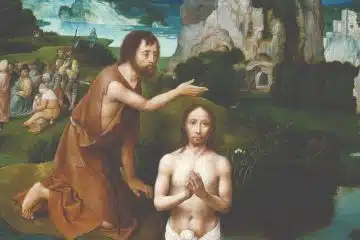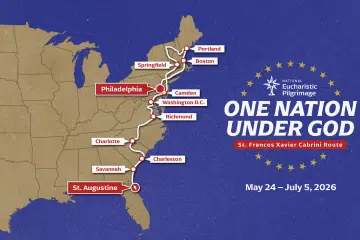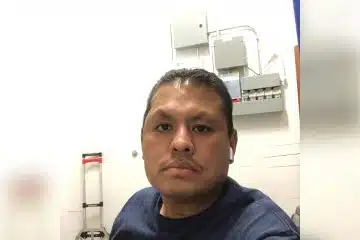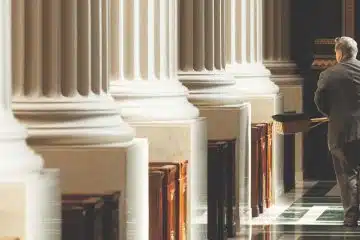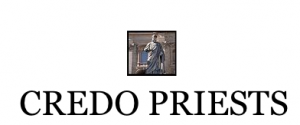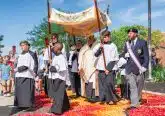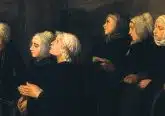Hundreds of US priests ask Synod to stand firm on Church teaching
By Mary Rezac CNA/EWTN News
Nearly 1,000 United States priests made their own a petition to the fathers of the upcoming Synod, originally made public and signed by nearly 500 English priests.
The statement’s wording is exactly that of the English version, and urges the fathers of the upcoming Ordinary Synod on the Family to issue a “clear and firm” proclamation of Church teaching on marriage and sexuality.
The organization Credo Priests has been circulating the petition and collecting online signatures, which are verified as U.S. Catholic clergy before appearing on the site. The signatory priests, sensing confusion among the laity after last year’s synod, said they wished to “re-state our unwavering fidelity to the traditional doctrines regarding marriage and the true meaning of human sexuality, founded on the Word of God and taught by the Church’s Magisterium for two millennia.”
Among the U.S. signatures are seven bishops – three active and four retired. According to the Credo Priests website, the petition was signed in keeping with Pope Francis’ call for open and honest dialogue during the preliminary Extraordinary Synod on the Family last fall.
“…it is necessary to say all that, in the Lord, one feels the need to say: without polite deference, without hesitation. And, at the same time, one must listen with humility and welcome, with an open heart, what your brothers say,” Pope Francis said to the Extraordinary Synod fathers last October.
“The Holy Father has been very clear about the invitation for all people to comment on certain questions related to the synod and to provide their views,” said J.D. Flynn, director of communications for the Diocese of Lincoln, whose own Bishop Conley is one of the three active U.S. bishop signatories.
According to Flynn, Bishop Conley signed the petition because he saw it as a way of encouraging and supporting the Synod fathers in their upcoming work.
“I think he really saw it as something that supports the work of the synod because the synod is intending to do things that effectively proclaim the Gospel to the world of today and to the situations and the culture of today.’
An incorrectly translated midterm document as well as skewed media coverage of last year’s preliminary Synod led to confusion among many Catholics about the purpose and practical effects of a Synod. The purpose of this signed statement is to clarify where the Church stands in regards to its teachings on marriage and family, Flynn said.
“At times the secular media lacks an understanding of the context…(and) has tried to turn the conversation around the synod into something that’s partisan or divisive or that resembles the American political process, and that’s just not how the church works,” he added.
Bishop Kagan of Bismark, N.D., said he also thought the secular media was trying to understand the synod from the point of view of a political process, rather than as a dialogue amongst bishops who are in union under the same Pope.
“The secular media gave the impression that Cardinal Kasper was the pope’s spokesman,” Bishop Kagan said. “Well, he isn’t, the pope is perfectly capable of speaking for himself. Cardinal Kasper was not intellectually dishonest, he was expressing his own thoughts, and he’s free to do that.”
A look at Church history and the various synods and councils that have taken place will show that there has often been differences of personal opinion and perspective among the faithful during discussions, but this does not mean that everything everyone says will then be codified into official Church teaching, Bishop Kagan explained.
“If people in general want a good idea of how the synod works, or how a council works, read the section (in Acts of the Apostles) where Paul and Barnabas come to Jerusalem and meet with the apostles to clarify whether Gentile converts needing to be circumcised in order to be true Christians,” Bishop Kagan said. “That’s a very good analogy to keep in mind.”
Bishop Kagan said while he was aware of the English statement, he didn’t know a United States version existed until a priest in his diocese approached him and asked permission to sign it. After re-reading the statement himself, Bishop Kagan said he had no qualms with signing it himself.
“The credo statement certainly isn’t new, it shouldn’t come as a surprise to any Catholic,” he said. “I see it as an expression of my fraternal support for my brother bishops and for the Holy Father, and it’s a great teaching moment for the whole church.”
Much of the media coverage during last year’s synod focused on the issue of whether or not divorced and re-married Catholics could receive communion, and whether any changes could be made to the annulment process. Bishop Kagan, who worked on annulment tribunals for 29 years, is well aware of the difficult and painful annulment process, and remains “hopeful that all of these issues will be addressed.”
However, the heart of the Synod is actually reaffirming marriage and family as the foundation of society itself, Bishop Kagan noted, and the credo statement simply supports that.
“Hopefully it isn’t misinterpreted,” he said. “It’s not a political agenda being pursued here.”
Posted May 18, 2015



